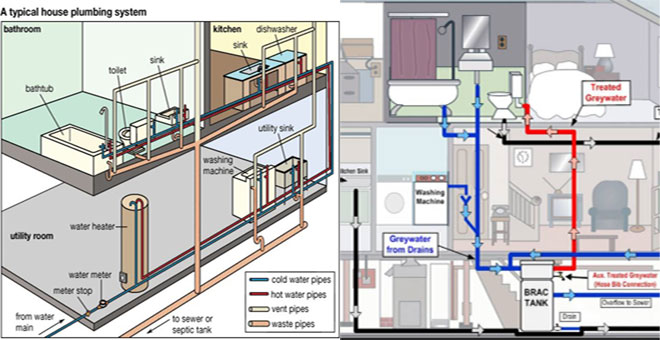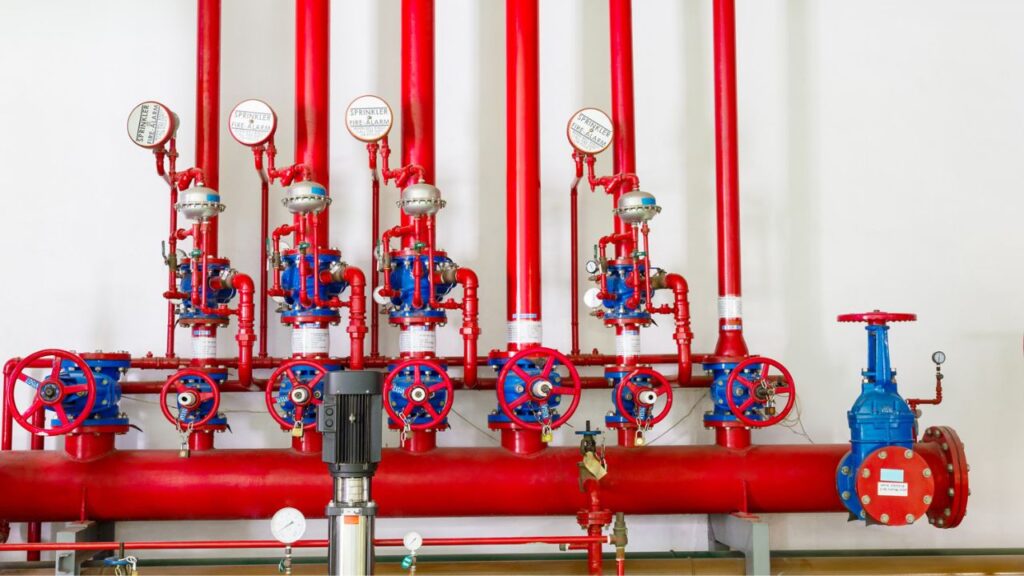The publisher is making several good points on Anatomy of a House: Understanding the Components as a whole in this article following next.

Recognizing how your home's plumbing system works is important for every single homeowner. From providing tidy water for drinking, food preparation, and bathing to securely eliminating wastewater, a properly maintained plumbing system is vital for your family members's health and convenience. In this extensive overview, we'll discover the elaborate network that comprises your home's pipes and deal suggestions on upkeep, upgrades, and handling typical problems.
Intro
Your home's pipes system is greater than just a network of pipes; it's an intricate system that guarantees you have accessibility to tidy water and efficient wastewater removal. Understanding its elements and just how they work together can help you avoid expensive repair services and make certain every little thing runs smoothly.
Fundamental Parts of a Pipes System
Pipelines and Tubes
At the heart of your pipes system are the pipes and tubes that lug water throughout your home. These can be constructed from numerous products such as copper, PVC, or PEX, each with its advantages in terms of longevity and cost-effectiveness.
Components: Sinks, Toilets, Showers, and so on.
Components like sinks, toilets, showers, and bath tubs are where water is made use of in your house. Recognizing how these components attach to the pipes system aids in detecting troubles and preparing upgrades.
Shutoffs and Shut-off Points
Valves control the flow of water in your plumbing system. Shut-off shutoffs are vital throughout emergency situations or when you require to make repair services, enabling you to isolate parts of the system without disrupting water flow to the whole house.
Water System
Key Water Line
The primary water line links your home to the community water supply or a private well. It's where water enters your home and is distributed to various components.
Water Meter and Stress Regulator
The water meter measures your water use, while a stress regulator makes sure that water streams at a safe pressure throughout your home's pipes system, stopping damage to pipes and fixtures.
Cold Water vs. Warm water Lines
Understanding the difference in between cold water lines, which supply water straight from the primary, and hot water lines, which bring heated water from the hot water heater, assists in troubleshooting and preparing for upgrades.
Drainage System
Drain Pipes Piping and Traps
Drain pipelines carry wastewater far from sinks, showers, and toilets to the sewage system or sewage-disposal tank. Traps protect against sewage system gases from entering your home and likewise catch debris that could trigger clogs.
Air flow Pipes
Air flow pipes permit air into the water drainage system, stopping suction that could slow down drain and create traps to vacant. Proper air flow is vital for keeping the honesty of your plumbing system.
Value of Proper Drain
Ensuring appropriate water drainage avoids backups and water damages. Routinely cleaning up drains pipes and preserving catches can avoid costly fixings and extend the life of your pipes system.
Water Furnace
Types of Hot Water Heater
Water heaters can be tankless or standard tank-style. Tankless heating systems heat water on demand, while containers store heated water for instant use.
Upgrading Your Pipes System
Factors for Upgrading
Upgrading to water-efficient fixtures or changing old pipelines can enhance water high quality, minimize water bills, and enhance the value of your home.
Modern Plumbing Technologies and Their Benefits
Discover modern technologies like smart leakage detectors, water-saving toilets, and energy-efficient water heaters that can save cash and lower ecological impact.
Cost Factors To Consider and ROI
Calculate the upfront expenses versus long-lasting cost savings when taking into consideration pipes upgrades. Several upgrades spend for themselves with minimized energy costs and less fixings.
How Water Heaters Attach to the Pipes System
Recognizing how water heaters connect to both the cold water supply and hot water distribution lines helps in identifying problems like inadequate hot water or leaks.
Maintenance Tips for Water Heaters
Frequently purging your water heater to get rid of debris, examining the temperature level setups, and checking for leaks can prolong its life expectancy and enhance energy efficiency.
Usual Pipes Problems
Leaks and Their Causes
Leaks can take place as a result of aging pipes, loosened fittings, or high water pressure. Addressing leaks immediately stops water damage and mold and mildew development.
Blockages and Blockages
Clogs in drains and commodes are commonly triggered by flushing non-flushable things or an accumulation of grease and hair. Using drainpipe displays and being mindful of what drops your drains pipes can avoid clogs.
Indicators of Pipes Problems to Expect
Low tide pressure, slow-moving drains, foul odors, or unusually high water expenses are indications of potential pipes issues that should be attended to quickly.
Pipes Upkeep Tips
Normal Assessments and Checks
Arrange yearly pipes evaluations to capture concerns early. Look for indicators of leakages, corrosion, or mineral build-up in faucets and showerheads.
Do It Yourself Maintenance Tasks
Basic tasks like cleaning tap aerators, checking for commode leaks making use of dye tablet computers, or protecting exposed pipelines in cold environments can avoid significant pipes issues.
When to Call a Professional Plumbing Professional
Know when a pipes problem requires professional experience. Attempting complex repair services without correct understanding can lead to even more damages and higher repair expenses.
Tips for Minimizing Water Use
Simple habits like fixing leaks immediately, taking much shorter showers, and running full tons of washing and recipes can conserve water and reduced your utility expenses.
Eco-Friendly Pipes Options
Consider lasting pipes materials like bamboo for flooring, which is durable and environmentally friendly, or recycled glass for kitchen counters.
Emergency Readiness
Actions to Take During a Plumbing Emergency
Know where your shut-off shutoffs are located and exactly how to switch off the water supply in case of a burst pipeline or significant leakage.
Significance of Having Emergency Situation Contacts Helpful
Maintain contact information for regional plumbing professionals or emergency situation solutions readily available for quick action throughout a pipes situation.
Environmental Impact and Conservation
Water-Saving Fixtures and Home Appliances
Setting up low-flow taps, showerheads, and commodes can significantly reduce water usage without sacrificing performance.
DIY Emergency Fixes (When Appropriate).
Short-term repairs like utilizing duct tape to patch a leaking pipe or placing a bucket under a dripping faucet can reduce damage until a professional plumbing arrives.
Conclusion.
Understanding the anatomy of your home's pipes system encourages you to preserve it successfully, saving time and money on repair work. By following regular maintenance routines and remaining informed concerning modern-day pipes innovations, you can guarantee your plumbing system operates successfully for many years to come.
Understanding Your Home Plumbing System: A Comprehensive Guide
Plumbing System: The Lifeline of Your Home
At its core, the plumbing system is designed to perform two primary functions: bring fresh water into your home and remove wastewater. The system is a network of pipes, fixtures, and other components that transport water and sewage. Residential plumbing systems include potable water supply lines, drain-waste-vent (DWV) systems, and various plumbing fixtures that make water use in daily tasks possible.
Key Components:
Water Supply: This part of your plumbing system brings municipal water into your home, passing through the main water supply line. It s responsible for supplying all water needs, from drinking to bathing.
Drainage System: It carries waste and water away from your home to the sewer or septic system. This system includes all the piping within your home that leads to external sewage or septic systems.
Vent System: An essential yet often overlooked component, the vent system allows sewer gases to escape and lets air into the drainpipes, ensuring water and waste move correctly through the system.
Fixture: More Than Just Taps and Toilets
Plumbing fixtures are the most interactive parts of the plumbing system, including faucets, showers, toilets, and sinks. Each fixture is connected to the plumbing system and plays a role in either the delivery of freshwater or the disposal of waste and wastewater.
Types of Fixtures:
- Faucets and Sinks: Used for washing hands, dishes, and other daily water needs.
- Toilets: Dispose of human waste through the sewage system.
- Bathtubs and Showers: Provide bathing facilities, requiring both hot and cold water supply.
Water Supply: The Source of Life
The water supply system is a critical component, ensuring that potable water is available throughout your home for various uses, including drinking, cooking, and cleaning. This system consists of pipes that distribute water to different parts of the house, controlled by valves to regulate the water flow.
Types of Plumbing: Materials and Methods
Various types of plumbing systems and materials are used in residential settings, each with its advantages and applications. From copper and PVC pipes for water supply to cast iron and ABS for drainage, the choice of materials can impact the longevity and efficiency of your plumbing system.
https://intownplumbingtx.com/articles/home-plumbing-system-guide/

I have been very occupied with Plumbing Installation 101: All You Need to Know and I am praying you appreciated my piece. Sharing is nice. Helping people is fun. Many thanks for your time spent reading it.
Schedule Now
Comments on “Breaking Down The Anatomy of Your House's Plumbing System”